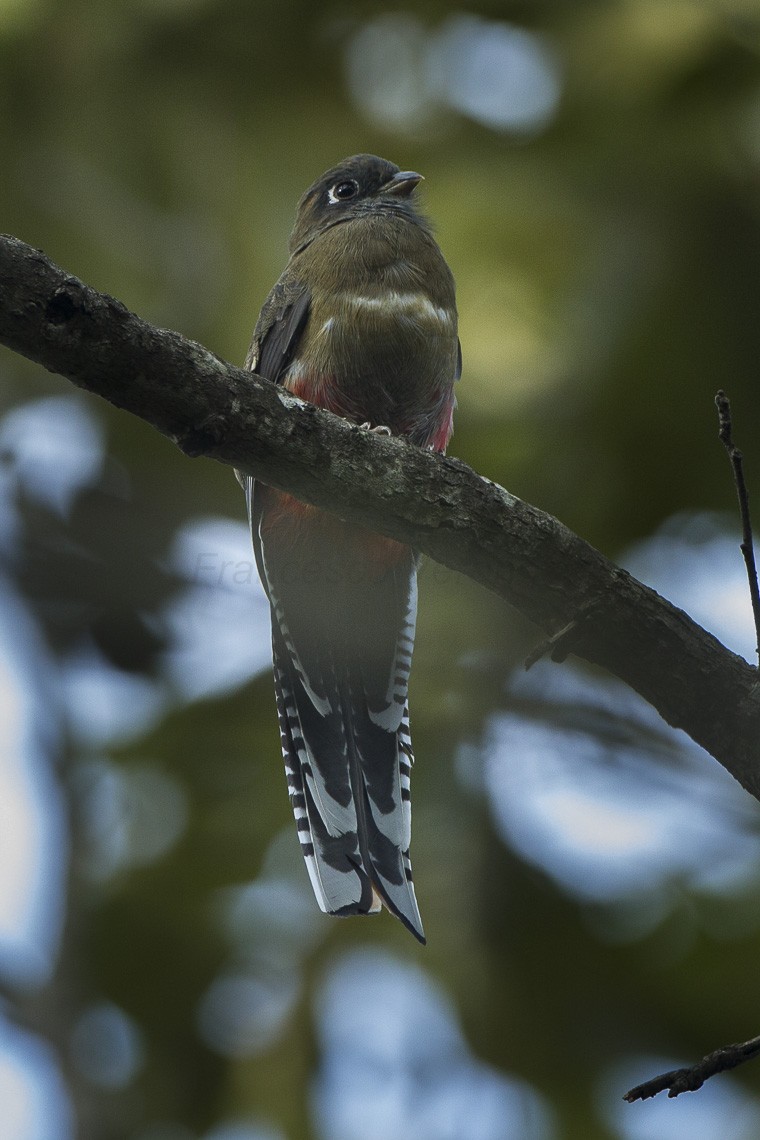Mountain Trogon
A species of Neotropical Trogons Scientific name : Trogon mexicanus Genus : Neotropical Trogons
Mountain Trogon, A species of Neotropical Trogons
Botanical name: Trogon mexicanus
Genus: Neotropical Trogons
Content
Description General Info
 Photo By Francesco Veronesi , used under CC-BY-SA-2.0 /Cropped and compressed from original
Photo By Francesco Veronesi , used under CC-BY-SA-2.0 /Cropped and compressed from original Description
The mountain trogon measures 11.5–12.5 in (29–31.5 cm) in length. It weighs between 61.5 and 85 g (2.2 and 3.0 oz), with a mean of 71 g (2.5 oz). Like all trogons, it is sexually dimorphic. The adult male is green on the crown, nape and upperparts; the upper side of its tail is bluish-green, with black tips to the rectrices. His face and throat are blackish, with an orange-red orbital ring and a bright yellow bill. He is green on the chest and red on the belly and undertail; the two colors are separated by a narrow band of white. The underside of his tail is black with three large white blocks created by white tips to the outer rectrices. His primaries are blackish, with black and white vermiculations on the wing coverts. The female is warm brown on her head and upperparts; her tail is rufous-brown on the upperside, with black tips to the rectrices. She has a small white crescent in front of her eye and a bold white crescent behind her eye. Her bill is dark above. Her chest is warm brown, separated from her brown lower chest and red belly by a narrow band of white. Her undertail is black and white; the outer webs of the rectrices are barred black and white, while the inner webs are black, broadly tipped with white. Her primaries are blackish with white outer webs, which form white streaks along her folded wing. Her wing coverts are pale brown, with dusky vermiculations. 
Size
31 cm
Nest Placement
Cavity
Feeding Habits
Mountain Trogon consumes a diet primarily comprised of insects and small fruits. Mountain Trogon forages by sallying from perches to catch prey and plucking fruit. Unique adaptations include a preference for certain fruit species during seasonal abundance. Mountain Trogon's feeding occurs at various times throughout the day.
Habitat
Mountain Trogon primarily resides in the lush, middle to upper strata of pine, pine-oak, and pine-evergreen woodlands, as well as in humid montane forests. This species favors higher altitudes, typically ranging from 1,200 to 3,500 meters, although it can sometimes be found as low as 600 meters. It has a pronounced preference for oak-and-cypress zones in montane regions. While mountain Trogon generally prefers mature forests, it is also known to adapt to secondary growth areas.
Dite type
Frugivorous
General Info
Feeding Habits
Bird food type

Fruit
Behavior
The mountain trogon may associate with mixed species flocks. It joins such flocks sporadically and in small numbers, but is an active member of the flock, moving in the upper and middle levels of the forest, when it is present. 
Species Status
Because of its large range and large population, estimated to number between 50,000 and 499,999 individuals, the mountain trogon is rated as a species of least concern by the International Union for the Conservation of Nature. Its population appears to be stable. 
Scientific Classification
Phylum
Chordates Class
Birds Order
Trogons Family
Trogons and quetzals Genus
Neotropical Trogons Species
Mountain Trogon